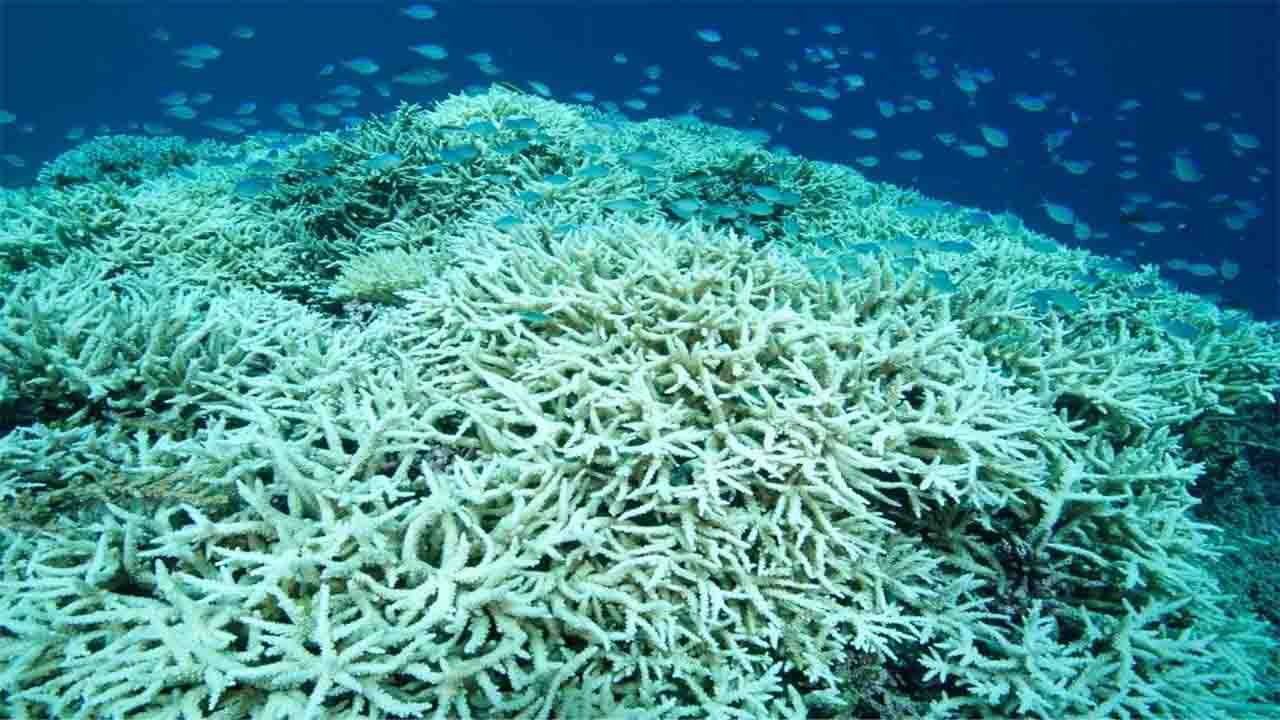As the sun casts its golden rays upon the world’s oceans, a silent tragedy unfolds beneath the waves. Coral reefs, once vibrant and teeming with life, are succumbing to a phenomenon known as coral bleaching. This insidious threat, fueled by climate change, is not merely erasing the colors of these underwater marvels but imperiling the very ecosystems that support marine biodiversity and millions of livelihoods.
Scientists at the Oceanic and Atmospheric Administration’s Coral Reef Watch of USA (NOAA), have issued grim warnings concerning coral mortality while declaring that the world is currently going through its fourth mass coral bleaching event.
What drives coral bleaching?
Coral bleaching, a distressing phenomenon plaguing coral reefs worldwide, stems from a variety of interconnected causes. Foremost among these is the rise in sea temperatures driven by climate change. As global temperatures soar, oceans absorb heat, subjecting corals to stress levels beyond their tolerance. This prompts the expulsion of vital algae from their tissues, resulting in the loss of the corals’ vibrant colors. Concurrently, ocean acidification, fueled by the absorption of excess carbon dioxide, impedes the ability of corals to build their calcium carbonate skeletons, further weakening their resilience. Human activities exacerbate these stressors, with pollution from runoff, overfishing, and destructive fishing practices amplifying coral vulnerability. Additionally, natural events like hurricanes and El Niño events can exacerbate bleaching events, subjecting already-stressed corals to further environmental strain. As these multifaceted factors converge, coral bleaching emerges as a dire threat to the survival of these invaluable marine ecosystems.
Source – earth.org
Previous Coral bleaching events
The very first global bleaching event occurred in 1998, during which 20% of the world’s coral reefs experienced heat stress significant enough to induce bleaching. Subsequently, the second event occurred in 2010, affecting 35% of coral reefs. The third event, spanning from 2014 to 2017, reached its peak with 56% of coral reefs surpassing the bleaching threshold.
And now reporting the latest developments, the Coral Reef Watch has verified that the Great Barrier Reef, the world’s largest coral reef system located in Australia, experienced its most extensive heat stress event on record in 2024, amplifying concerns surrounding coral reef wellbeing.
Global Repercussions
The ramifications of coral bleaching extend far beyond the ocean’s depths. Coral reefs serve as crucial habitats for a myriad of marine species, from colorful fish to intricate invertebrates. Their loss disrupts the intricate balance of marine ecosystems, leading to declines in fish populations, loss of biodiversity, and cascading impacts on coastal communities reliant on reefs for food security, tourism, and coastal protection.
Witnessing the Unraveling
Around the globe, coral reefs are bearing the brunt of this ecological crisis. From the iconic Great Barrier Reef in Australia to the pristine atolls of the Maldives, bleaching events are unfolding with alarming frequency and severity. Moreover, Over the last year, widespread bleaching events have been documented in various regions, encompassing Florida and the broader Caribbean, Mexico, Brazil, Australia, the South Pacific, the Red Sea, the Persian Gulf, Indonesia, and the Indian Ocean, including the eastern coast of Africa and the Seychelles. Each event leaves a trail of devastation in its wake, underscoring the urgency of addressing the root causes of coral bleaching before it’s too late.
A Call to Action
In the face of this looming crisis, there is no time for complacency. Urgent action is needed to mitigate the impacts of climate change and safeguard the future of coral reefs. Governments, businesses, and individuals must commit to reducing greenhouse gas emissions, investing in renewable energy, and implementing sustainable practices to protect these invaluable ecosystems.
As we bear witness to the bleaching of coral reefs, we are confronted with a stark reality – the fate of these fragile ecosystems hangs in the balance. But amidst the bleached horizons, there remains an opportunity for redemption. By heeding the call to action, we can rewrite the narrative of coral bleaching, ensuring that these vibrant underwater havens continue to thrive for generations to come. The time to act is now, for the future of our oceans and all who depend on them hangs in the balance








